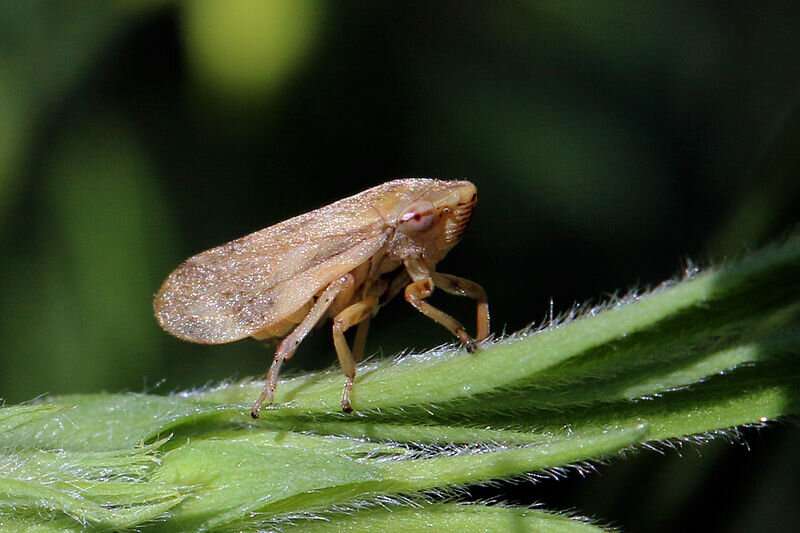July 14, 2021 report
Froghoppers produce negative pressure exceeding 1 MPa for sucking xylem from plants

A trio of researchers at the University of British Columbia has found that froghoppers have cibarial pumps capable of sucking the xylem from plants by producing negative pressure exceeding 1 megapascal. In their paper published in Proceedings of the Royal Society B, Elisabeth Bergman, Emma Green and Philip Matthews, describe their study of the unique insects and what they learned about their ability to generate extremely strong suction forces.
Froghoppers are a type of insect found in North America and parts of Europe—they get their name from their ability to jump very long distances relative to their body size. They are unique in other ways, as well—encasing themselves in foamed-up plant sap in the springtime is just one example. They also have a butt catapult that throws their urine through the air to keep the bugs from being overwhelmed because they pee so much. And now it seems they are also champion suckers.
Noting that froghoppers feed on pure xylem sap (almost constantly, which is why they urinate so much) the researchers wondered how much sucking power the insect might have. Unlike phloem, which is what most other plant-sucking insects sip, xylem sap is much more difficult to obtain. Plants with phloem have positive pressure—when an insect taps a stem, the fluid gushes out. With xylem plants, things are opposite—they have negative pressure. An insect that wants to feed on them must be able to overcome that force. Notably, xylem is also very low in nourishment, which means that those who feed on it must consume a lot, which explains why froghoppers drink and urinate so much.
To find out just how much suction froghoppers can generate, the researchers captured multiple samples and studied them in their lab. First, they took micro-scans of the heads to learn about their structure. They found that the insects had a cibarial pump in their foreheads—it works much like a diaphragm when it is pulled by muscles. In froghoppers, that muscle is called the post-clypeus and it turned out to be very large for an insect. The researchers then used the dimensions of the pump and muscle to calculate how much pressure the two working together could generate—approximately 1.3 megapascals. This negative pressure force, the team notes, is greater than the negative pressure exerted by the plants that generate the xylem sap. They note the force is strong enough that the little insect could suck the water out of a cup at the base of the Statue of Liberty while perched on its crown.
More information: Elisabeth A. Bergman et al, The cibarial pump of the xylem-feeding froghopper Philaenus spumarius produces negative pressures exceeding 1 MPa, Proceedings of the Royal Society B: Biological Sciences (2021). DOI: 10.1098/rspb.2021.0731
Journal information: Proceedings of the Royal Society B
© 2021 Science X Network



















